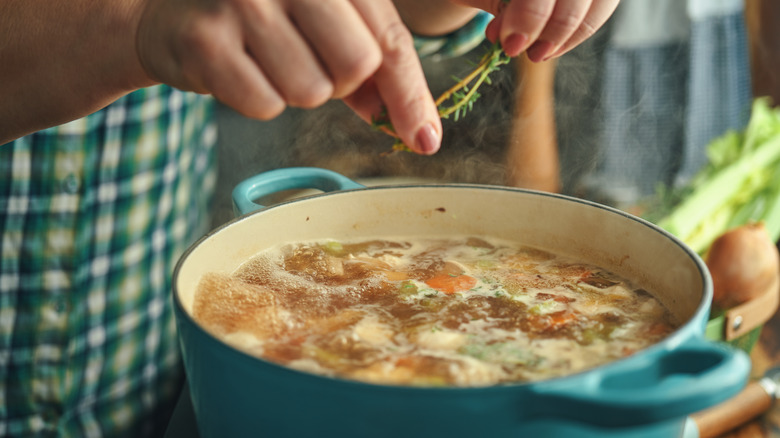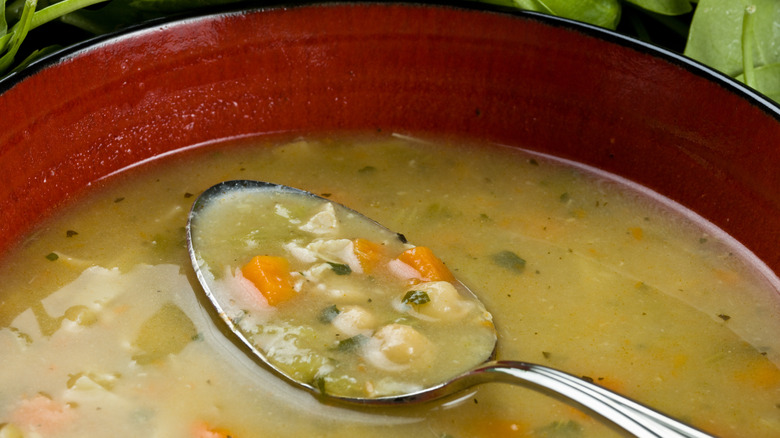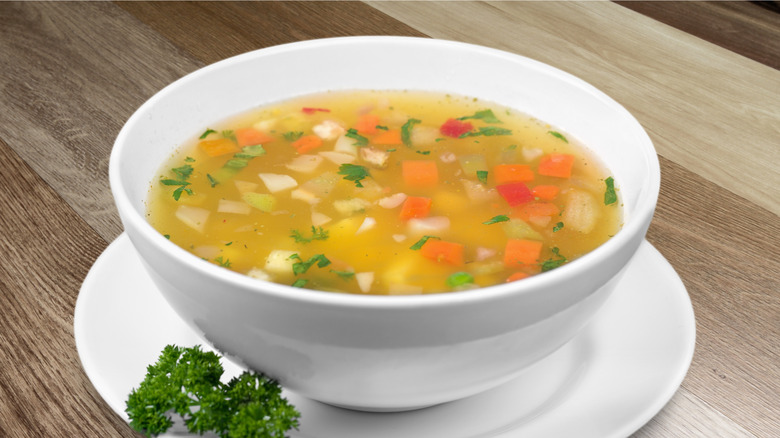Easily Remove That Layer Of Fat From Soup With A Simple Lettuce Hack
Simmering soup may fill your house with delicious aroma, but the pot might not appear so appetizing when the lid comes off. Sitting on the surface can be unsightly fat. Time to open the fridge and grab a lettuce leaf.
While butter and other fats can add flavor to a dish, they shouldn't separate and leave a greasy layer on top of your soup. Even though there are spoons, strainers, and other kitchen gadgets that can help when that happens, an iceberg lettuce leaf can also make quick work of that fat puddle.
First, take the soup off the heat, as fat starts to solidify at colder temperatures. Once it's cooled a bit, gently place the lettuce leaf on top to avoid breaking the surface tension. Over about five minutes, the floating lettuce will absorb the fat, after which you will discard it. Repeat the process as needed. This all means that a scrumptious but fatty soup can be saved one leaf at a time.
Does the type of lettuce matter?
If you don't have any iceberg lettuce, never fear. Practically any large, flat leafy green could work here, from other lettuce varieties to a cabbage leaf. A scattering of delicate arugula or chicory would not be beneficial, however, as you need something with a large surface area to take up the excess fat.
However, be aware that heartier greens might change your meal slightly. Iceberg lettuce works especially well because it won't impart any flavor or color into the soup. Meanwhile, bitter-tasting kale could easily leech green color and possibly unwanted flavor into the pot, even after a few minutes sitting on the surface.
One aspect that can make the lettuce leaf hack more effective is the temperature. An ice cold leaf can help the fat coagulate more quickly and adhere to its surface, while the more dramatic change in temperature allows the fat to separate from the other liquid and ingredients more efficiently.
Other simple ways to separate fat from soup
While floating a lettuce leaf on the surface gets the job done, other methods can remove that fat layer, too. The easiest way to skim the fat is to allow the soup to cool, then remove the solidified fat layer, though that can be time-consuming.
Another method is to float an ice cube in the soup, which cools one area and allows the fat to pool there. Then, use a spoon to remove the fat. If you also chill that utensil, the process can be even easier
Although there are plenty of methods to remove unwanted fat from soup, remember to avoid vigorously stirring the liquid within the pot. This will emulsify the fat and make it more difficult to remove. Whether you intend to use a lettuce leaf, spoon, or other item, it is best to keep the liquid calm so that the fat can be easily removed from the surface.


